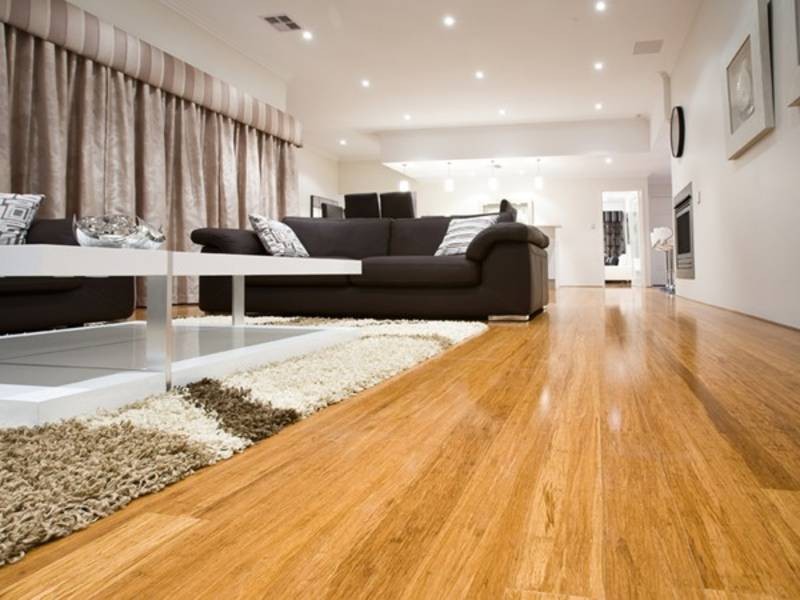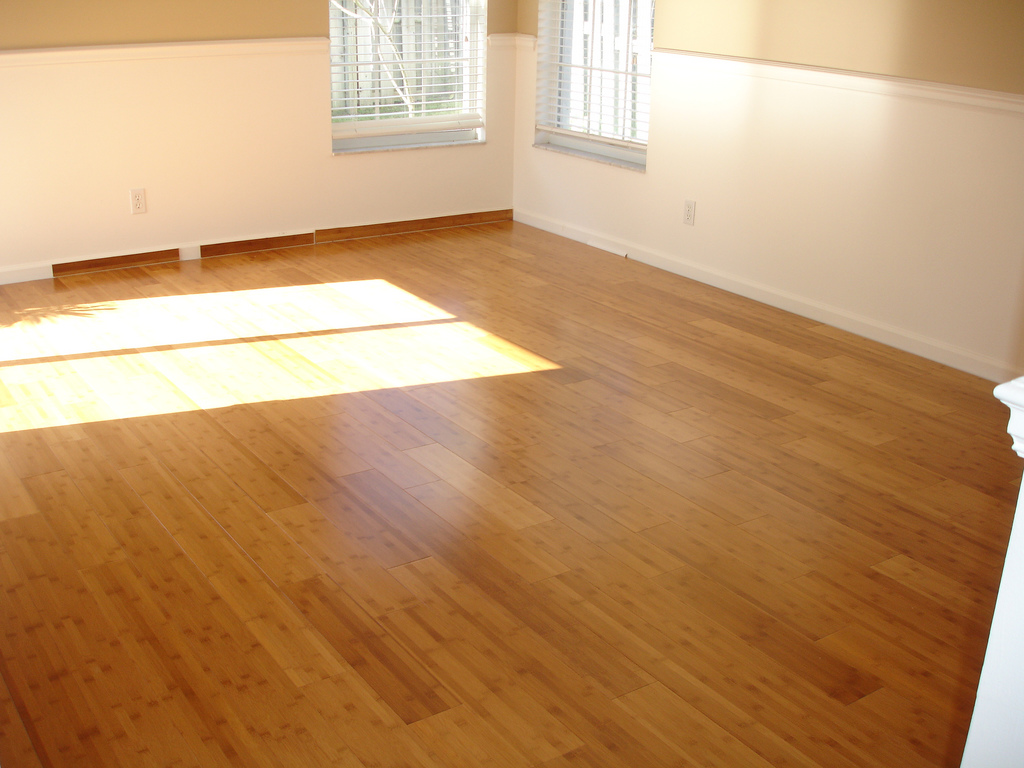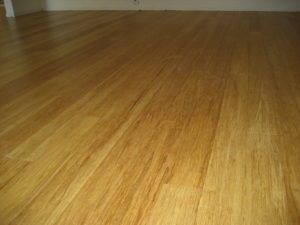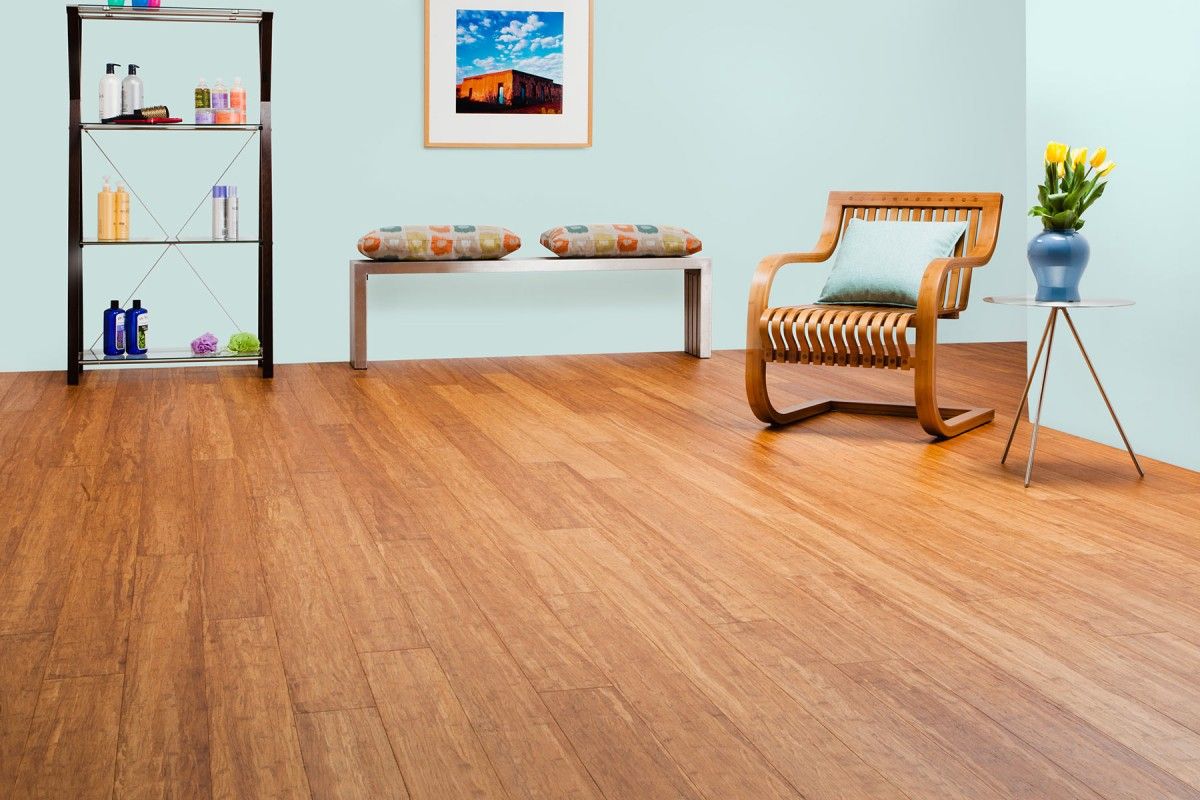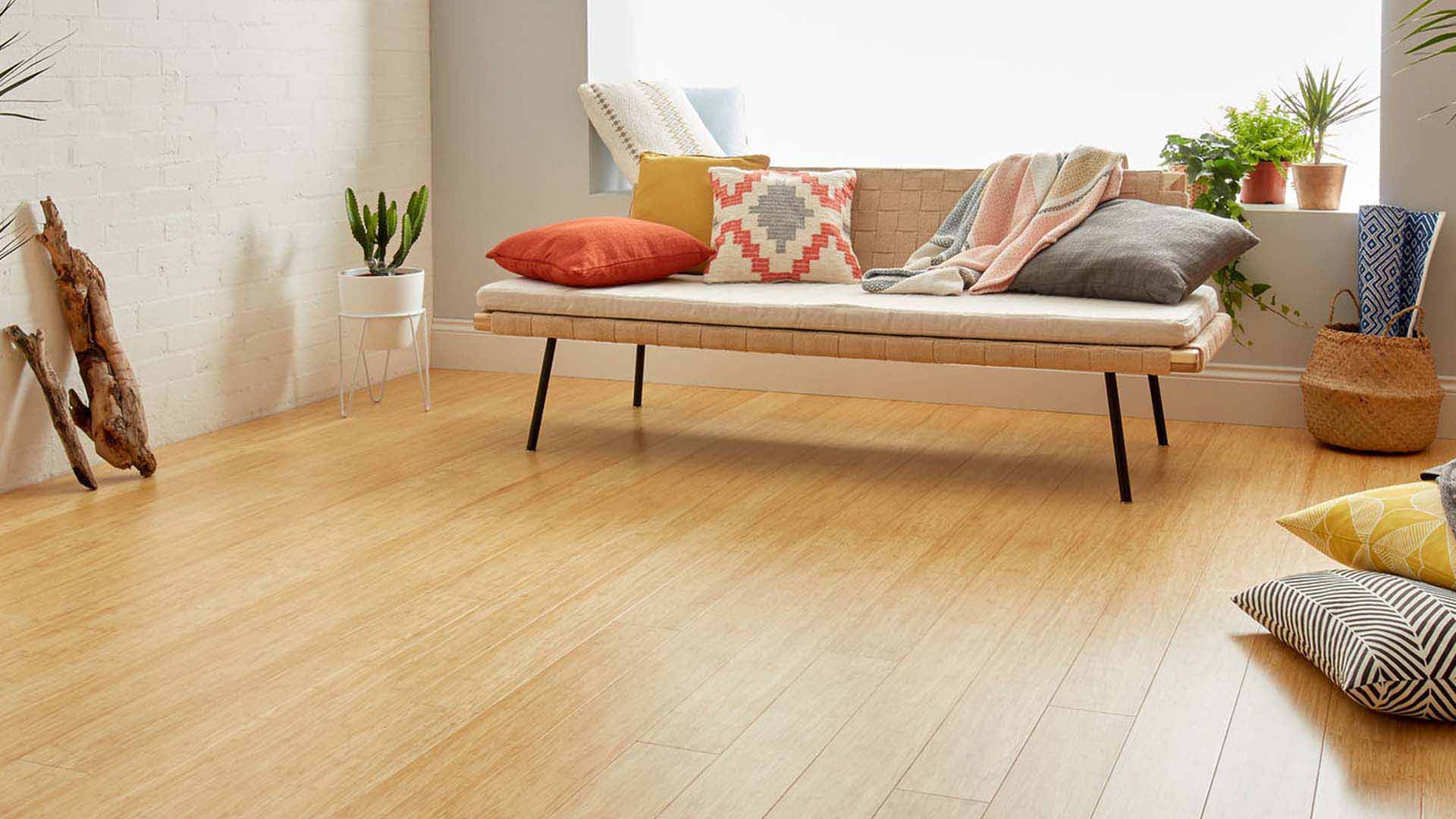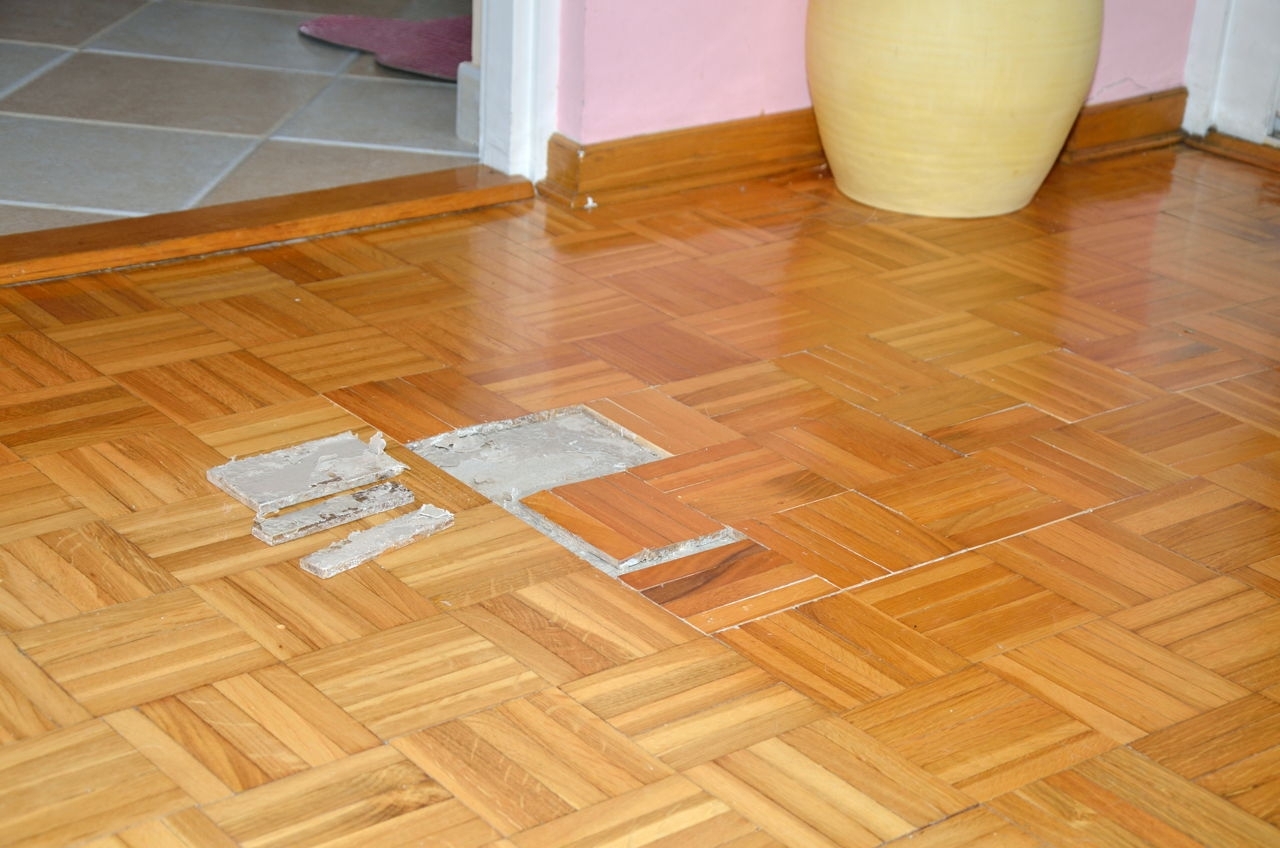Bamboo flooring has become increasingly popular in recent years due to its aesthetic appeal and perceived environmental benefits. However, when investing in new flooring, it’s crucial to understand its durability and how it stands up to daily wear and tear. Here’s a comprehensive review of bamboo flooring durability, its benefits, maintenance, and what to consider before choosing it for your home.
Bamboo Flooring Overview
Bamboo flooring is often marketed as an eco-friendly alternative to traditional hardwood flooring. But what exactly is bamboo flooring, and how does it compare in terms of durability?
Bamboo is a grass, not a wood. However, it is processed into flooring planks that resemble traditional hardwood floors. This process involves cutting the bamboo stalks into strips, boiling them to remove impurities, and then laminating them together under high pressure. The result is a material that can be just as hard and durable as many types of hardwood.
There are different types of bamboo flooring, including horizontal, vertical, and strand-woven. Horizontal and vertical bamboo are made by stacking strips of bamboo either horizontally or vertically before pressing them together. Strand-woven bamboo, on the other hand, is made by shredding the bamboo stalks into fibers and then compressing them under extreme heat and pressure. This type of bamboo flooring is typically the most durable due to its density.
Bamboo flooring comes in a variety of finishes, including natural and carbonized. The natural finish retains the light, blonde color of the bamboo, while the carbonized finish is achieved by heating the bamboo, which darkens the color. While carbonized bamboo is visually appealing, the heating process can make it slightly softer and less durable than natural bamboo.
One of the main advantages of bamboo flooring is its sustainability. Bamboo grows much faster than traditional hardwood trees, reaching maturity in just 3-5 years. This rapid growth rate makes it a more renewable resource. However, the sustainability of bamboo flooring also depends on how it is harvested and manufactured, so it’s important to choose products that are certified by organizations like the Forest Stewardship Council (FSC).
The cost of bamboo flooring can vary, but it is generally more affordable than high-end hardwood options. Prices range depending on the type of bamboo, the finish, and the manufacturer. Despite being more budget-friendly, bamboo flooring does not necessarily compromise on quality, making it an attractive option for many homeowners.

The Durability of Bamboo Flooring
Durability is a key consideration when choosing any type of flooring, and bamboo flooring is no exception. How well does bamboo flooring stand up to daily wear and tear?
One of the primary factors contributing to the durability of bamboo flooring is its hardness. Strand-woven bamboo, in particular, is known for its exceptional hardness, often surpassing that of traditional hardwoods like oak and maple. This makes it highly resistant to scratches and dents, which is a significant advantage in high-traffic areas or homes with pets and children.
In addition to hardness, the durability of bamboo flooring is also influenced by its stability. Bamboo has a natural resistance to moisture, which helps prevent warping and swelling. However, it is still important to control indoor humidity levels, as excessive moisture can damage the flooring over time. Proper acclimation and installation are also critical to ensuring the longevity of bamboo flooring.
The finish applied to bamboo flooring also plays a crucial role in its durability. High-quality finishes provide a protective layer that helps resist scratches, stains, and moisture. Many bamboo floors come with a factory-applied finish, which is typically more durable than finishes applied on-site. Regular maintenance, such as sweeping and damp mopping, can help preserve the finish and extend the life of the flooring.
While bamboo flooring is generally durable, it is not entirely immune to damage. Heavy furniture, high heels, and sharp objects can still cause scratches or dents. Using protective pads under furniture legs and placing rugs in high-traffic areas can help minimize wear and tear. It’s also important to address spills and stains promptly to prevent long-term damage.
Another consideration is the impact of UV light on bamboo flooring. Prolonged exposure to direct sunlight can cause the color of bamboo flooring to fade over time. Using window treatments or UV-protective coatings can help mitigate this issue and preserve the appearance of the flooring.
Maintenance and Care
Proper maintenance and care are essential for preserving the appearance and durability of bamboo flooring. With the right approach, you can keep your bamboo floors looking beautiful and extend their lifespan.
Regular cleaning is the first step in maintaining bamboo flooring. Dust and dirt can act like sandpaper, scratching the surface over time. To prevent this, sweep or vacuum your bamboo floors regularly. Use a soft-bristle broom or a vacuum with a hardwood floor attachment to avoid damaging the finish.
In addition to sweeping, damp mopping is also important for deeper cleaning. Use a microfiber mop and a cleaning solution specifically designed for hardwood or bamboo floors. Avoid using excessive water, as standing water can seep into the seams and cause damage. Wring out the mop thoroughly before use, and dry any wet spots immediately.
Protecting your bamboo flooring from scratches and dents is also crucial. Place felt pads under the legs of furniture to prevent them from scratching the surface when moved. Use area rugs or mats in high-traffic areas, such as entryways and hallways, to reduce wear and tear. Be mindful of heavy or sharp objects that can dent the wood, and lift rather than drag furniture when moving it.
Controlling indoor humidity levels is another important aspect of bamboo flooring maintenance. Bamboo is naturally resistant to moisture, but excessive humidity can still cause it to warp or swell. Maintain a consistent indoor humidity level between 30% and 50% to protect your flooring. Use a humidifier in the winter and a dehumidifier in the summer if necessary.
Spills and stains should be addressed promptly to prevent long-term damage. Wipe up spills immediately using a soft, dry cloth. For tougher stains, use a damp cloth and a mild cleaning solution. Avoid using harsh chemicals or abrasive cleaners, as they can damage the finish. Regularly inspect your floors for signs of damage and address any issues promptly.
Last, consider periodic refinishing to restore the appearance of your bamboo flooring. Over time, the finish may wear down, making the floor look dull or scratched. Refinishing involves sanding the surface to remove the old finish and applying a new coat of stain and sealant. This process can rejuvenate the flooring and extend its lifespan. However, refinishing is not always possible with engineered bamboo floors, so consult with a professional before proceeding.
Comparing Bamboo to Other Flooring Options
When choosing flooring for your home, it’s helpful to compare bamboo to other popular options to understand its relative strengths and weaknesses. Here’s how bamboo flooring stacks up against hardwood, laminate, and vinyl flooring.
Compared to traditional hardwood flooring, bamboo is often seen as a more sustainable option. Hardwood trees can take decades to mature, while bamboo grows quickly, reaching maturity in just 3-5 years. This rapid growth rate makes bamboo a more renewable resource. However, the sustainability of bamboo also depends on how it is harvested and manufactured, so it’s important to choose products from reputable sources.
In terms of durability, strand-woven bamboo is comparable to some of the hardest hardwoods, such as oak and maple. It is highly resistant to scratches and dents, making it suitable for high-traffic areas. However, carbonized bamboo, which is darker in color, is slightly softer and may be more prone to scratches. Both bamboo and hardwood require regular maintenance to keep them looking their best.
Laminate flooring is another popular option, known for its affordability and ease of installation. While laminate can mimic the look of wood, it is not as durable as bamboo or hardwood. Laminate is more susceptible to scratches and cannot be refinished if damaged. Bamboo, on the other hand, can be refinished, extending its lifespan. Laminate is also less eco-friendly, as it is made from synthetic materials.
Vinyl flooring is praised for its water resistance and low maintenance. It is an excellent choice for areas prone to moisture, such as bathrooms and kitchens. However, vinyl does not offer the same natural beauty and warmth as bamboo. Additionally, vinyl is made from PVC, a type of plastic, which raises environmental concerns. Bamboo is a more sustainable choice, providing a natural look and feel.
Tile flooring, especially ceramic and porcelain, is known for its durability and water resistance. It is an excellent choice for bathrooms, kitchens, and other wet areas. However, tile can be cold and hard underfoot, which may not be as comfortable as bamboo. Tile installation can also be more complex and expensive compared to bamboo flooring.
Engineered wood flooring is another alternative, offering the look of hardwood with added stability. Engineered wood consists of a thin layer of hardwood on top of a plywood or high-density fiberboard (HDF) core. This construction makes it more resistant to moisture and temperature changes than solid wood. Bamboo flooring, especially strand-woven bamboo, offers similar stability and can be a more eco-friendly choice.
Environmental Benefits of Bamboo Flooring
Bamboo flooring is often touted for its environmental benefits, but what exactly makes it an eco-friendly choice? Understanding the environmental advantages of bamboo can help you make a more informed decision for your home.
One of the primary environmental benefits of bamboo flooring is its rapid growth rate. Bamboo is a type of grass that can grow up to 3 feet in a single day, reaching maturity in just 3-5 years. This is significantly faster than traditional hardwood trees, which can take decades to mature. The quick growth cycle of bamboo makes it a highly renewable resource.
In addition to its fast growth, bamboo can be harvested without killing the plant. When the stalks are cut, the root system remains intact and can regrow new shoots. This sustainable harvesting method helps preserve the ecosystem and reduces soil erosion. Responsible bamboo harvesting also supports the health of the surrounding environment.
Bamboo forests have a positive impact on the atmosphere. Bamboo plants absorb large amounts of carbon dioxide and release oxygen, helping to reduce greenhouse gases and combat climate change. A healthy bamboo forest can sequester more carbon dioxide than an equivalent area of hardwood forest, making it a valuable tool in carbon offsetting.
The manufacturing process of bamboo flooring also offers environmental benefits. Many bamboo flooring products are made using adhesives and finishes with low volatile organic compounds (VOCs), which contribute to better indoor air quality. Additionally, some manufacturers use eco-friendly practices, such as recycling water and reducing waste during production.
Choosing bamboo flooring can also help protect natural forests. The demand for hardwood flooring has led to deforestation and the loss of vital habitats for wildlife. By opting for bamboo, you can reduce the pressure on hardwood forests and contribute to forest conservation efforts. Look for bamboo flooring products that are certified by organizations like the Forest Stewardship Council (FSC) to ensure responsible sourcing.
Last, the durability and longevity of bamboo flooring contribute to its environmental benefits. High-quality bamboo floors can last for decades with proper care, reducing the need for frequent replacements and minimizing waste. When bamboo flooring does reach the end of its life, it is biodegradable and can be disposed of in an environmentally friendly manner.
Common Mistakes to Avoid
Choosing and maintaining bamboo flooring involves several important considerations. Avoiding common mistakes can help ensure that your flooring remains beautiful and functional for many years. Here are some common mistakes to avoid.
One common mistake is not properly acclimating the bamboo flooring before installation. Bamboo, like hardwood, needs time to adjust to the temperature and humidity levels of your home. Failing to acclimate the bamboo can lead to issues like warping or gaps. Make sure to let the bamboo sit in the installation area for at least 48-72 hours before starting the installation process.
Using the wrong cleaning products is another frequent error. Harsh chemicals, abrasive cleaners, or excessive water can damage the finish and surface of the bamboo. Stick to gentle, pH-neutral cleaners specifically designed for hardwood or bamboo floors. Avoid using too much water when mopping to prevent moisture damage.
Neglecting to use protective pads under furniture can result in scratches and dents. Heavy furniture can cause significant damage when moved or rearranged. Protect your flooring by placing felt pads under the legs of chairs, tables, and other furniture. This helps prevent scratches and distributes the weight more evenly.
Failing to control indoor humidity levels can also lead to problems. Bamboo naturally expands and contracts with changes in humidity. Excessive fluctuations can cause the flooring to warp or split. Maintain a consistent indoor humidity level between 30% and 50% to protect your flooring. Use a humidifier in dry months and a dehumidifier in humid months if necessary.
Ignoring sunlight exposure can cause bamboo flooring to fade or discolor over time. Prolonged exposure to direct sunlight can damage the bamboo’s surface. Use window treatments such as curtains or blinds to block out UV rays. Rearranging furniture periodically can also help ensure even exposure and prevent fading in specific areas.
Not addressing spills and stains promptly is another common mistake. Allowing liquids to sit on the floor can cause stains and water damage. Clean up spills immediately using a damp cloth and a gentle cleaning solution. Avoid using abrasive cloths or harsh chemicals, as these can damage the finish. Regularly inspect your floors for signs of damage and address any issues promptly.
How do I clean and maintain bamboo flooring?
Regular cleaning is essential for maintaining bamboo flooring. Sweep or vacuum daily to remove dust and dirt, and use a microfiber mop with a gentle cleaning solution for deeper cleaning. Avoid using excessive water and harsh chemicals. Place felt pads under furniture and use area rugs in high-traffic areas to protect the floor. Maintain a consistent indoor humidity level and clean up spills promptly to prevent damage.
Can bamboo flooring be installed in humid or damp areas?
While bamboo flooring is more resistant to moisture than traditional hardwoods, it is not completely waterproof. It can be installed in areas with moderate humidity, but it is not recommended for damp areas like bathrooms or basements. Proper installation with a moisture barrier and maintaining consistent indoor humidity levels can help protect the flooring. For areas prone to moisture, consider engineered bamboo or other moisture-resistant flooring options.
How does bamboo flooring compare to hardwood in terms of durability?
Strand-woven bamboo flooring is comparable to some of the hardest hardwoods, such as oak and maple, in terms of durability. It is highly resistant to scratches and dents, making it suitable for high-traffic areas. However, carbonized bamboo, which is darker in color, is slightly softer and may be more prone to scratches. Both bamboo and hardwood require regular maintenance to keep them looking their best.
Is bamboo flooring suitable for homes with pets?
Bamboo flooring can be a good choice for homes with pets, but it requires some precautions. The flooring is durable and can withstand significant wear, but pet claws can cause scratches. Keep pet nails trimmed and use area rugs in high-traffic areas to protect the floor. Clean up any accidents promptly to prevent stains and water damage. Regular maintenance and protective measures can help keep the flooring in excellent condition.
What are the environmental benefits of bamboo flooring?
Bamboo flooring offers several environmental benefits. Bamboo grows quickly, reaching maturity in just 3-5 years, making it a highly renewable resource. It can be harvested without killing the plant, allowing it to regrow. Bamboo plants also absorb large amounts of carbon dioxide and release oxygen, helping to combat climate change. Choosing bamboo flooring from reputable sources with certifications like the FSC ensures responsible harvesting and manufacturing practices.
Can bamboo flooring be refinished?
Yes, bamboo flooring can be refinished, but it depends on the type of bamboo and the thickness of the wear layer. Strand-woven bamboo and solid bamboo can typically be sanded and refinished to restore their appearance. Engineered bamboo flooring may have a thinner wear layer, making refinishing more challenging. Proper maintenance and care can reduce the frequency of refinishing needed, helping to preserve the beauty and functionality of the floor.
Related Posts:
